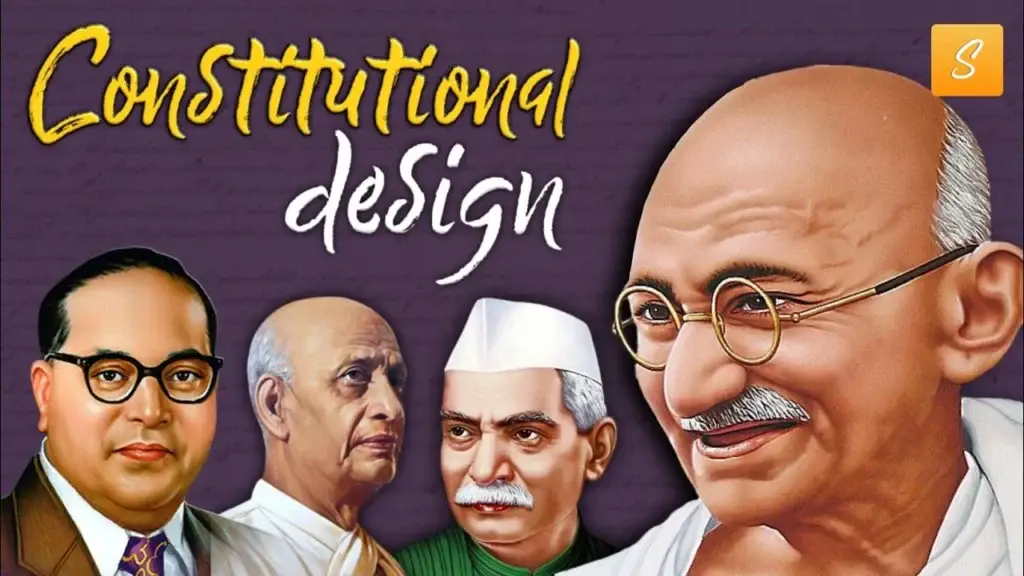
Chapter Constitutional Design Class 9 Topicwise Question Answer
1. What does Constitution mean?
Answer: constitution is a set of written rules that are accepted by people of a country.
2. Why do we need a constitution?
Answer: We need a constitution because:
a) It generates trust and coordination.
b) It specified how government is to be constituted, who will have power to take which decisions.
c) It lays limits on powers of government and contains rights of citizens.
d) It expresses the aspirations of people for creating a good society.
3. Who firstly drafted the constitution for India?
Answer: In 1928, Motilal Nehru and eight other congress leaders drafted a constitution for India.
4. How difficult it was for India to frame a constitution for united India after Independence?
Answer:
a) India got freedom with a traumatic experience of partition.
b) Princely states made the situation worse. They were given the choice free to join India.
c) The constitution makers were anxious about the future of India.
5. Explain the main features of functions of the Indian constitution.
Answer:
1. It generates a degree of trust and coordination that is necessary for different kind of people to live together.
2. It specifies how the government will be constituted, who will have power to take which decisions.
3. It lays down limits on the powers of the Government and tells us what the rights of the citizens are.
4. It expresses the aspirations of the people about creating a good society.
5. It provide fundamental rights, and independent Judiciary and Independent election commission to its citizens.
6.What were the steps involved in the framing of the Indian constitution?
Answer:
1. The drafting of the document called the constitution was done by an assembly of elected representatives called the Constituent Assembly.
2. Elections to the Constituent Assembly were held in July 1946.
3. It’s first meeting was held in December 1946.
4. Soon after the country was divided into India and Pakistan and the constituent assembly was also divided into the constituent assembly of India and that of Pakistan.
5. The Constituent Assembly that wrote the Indian constitution had 299 members.
6. The Assembly adopted the constitution on 26 November 1949 and it came into force on 26 January 1950.
7. What are the main ideas enshrined the preamble of the Indian constitution?
Answer:
The ideals written in the preamble of the constitution or as under:
1. Justice: Every citizen of India will have social, economic and political justice.
2. Liberty: Every citizen will have the liberty of thought, expression, believe, faith and worship.
3. Equality: Every citizen will be provided with the equality of status and opportunity.
4. Fraternity: All the citizens of India have been assured about the dignity of individual and the unity and integrity of the nation.
8. How did the constituent assembly work to prepare the constitution of India?
Answer:
1. The Constituent Assembly worked in a systematic, open and consensual manner.
2. First, some basic principles were decided and agreed upon.
3. Then a drafting committee chaired by Dr. B.R. Ambedkar prepared a draft of constitution for discussion.
4. Several rounds of through discussion took place clause by clause.
5. More than 2000 amendments were considered and the members deliberated for 114 days spread over 3 years.
6. Every document presented and every word spoken in the constituent assembly was recorded and preserved.
7. These are called ‘Constituent Assembly Debates’.
9. What was the philosophy behind the constitution?
Answer:
1. The values that inspired and guided the freedom struggle and were in turn, nurtured by it, formed the foundation of for India’s democracy.
2. These values are embedded in the preamble of the Indian constitution.
3. They guide all the articles of the Indian constitution.
4. The constitution begins with a short statement of its basic values. This is called the preamble of the constitution.
5. Taking inspiration from American model, most countries in the contemporary world have chosen to begin their constitutions with a preamble.
10. Why should we accept the constitution made by the Assembly more than 50 or 60 years ago? Explain in your own words.
Answer:
1. The constitution does not reflect the views of its members alone it expresses a broad consensus of its time.
2. Over the last half a century several groups have questioned some provisions of the constitution. But no large social group or political party has ever questioned the legitimacy of the constitution itself.
3. The constituent assembly represented the people of India. There was no universal adult franchise at that time.
4. The way in which the Constituent Assembly worked gives sanctity to the constitution. The Constituent Assembly worked in a systematic, open and consensual manner.
5. Every document presented and every word spoken in the Constituent Assembly has been recorded and preserved. These are called ‘Constituent Assembly Debates’.
11. “Indian Constitution is both rigid and flexible”, Explain.
Answer:
1. Indian Constitution is both rigid and flexible, because the procedure of amendment is neither easy nor difficult.
2. The Constitution has provided a federal structure for India. The jurisdictions of the centre and state have been defined and demarcated.
3. Both the centre and the states have been authorized to exercise powers independency.
4. Amendments can be made only with the consent of both the Centre and the States.
5. A special majority of the Union Parliament, i.e., a majority of not less then two-thirds vote is required to amend the Constitution.
Thus Indian Constitution enjoys the advantages of a combination of flexibility and rigidity.
For More Click Below:
. What is democracy? Why Democracy?
****************************
For More: